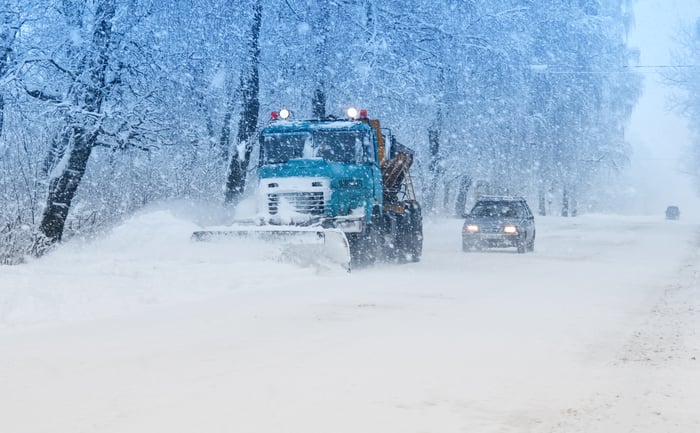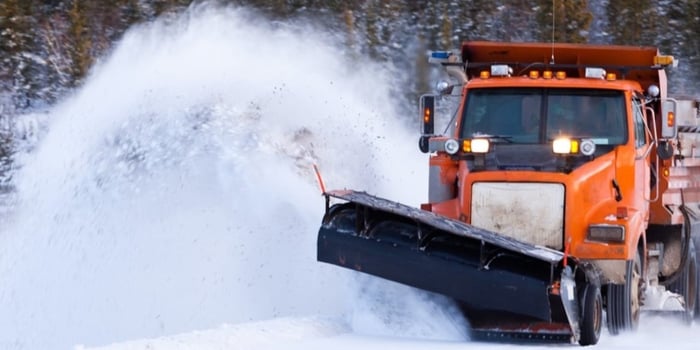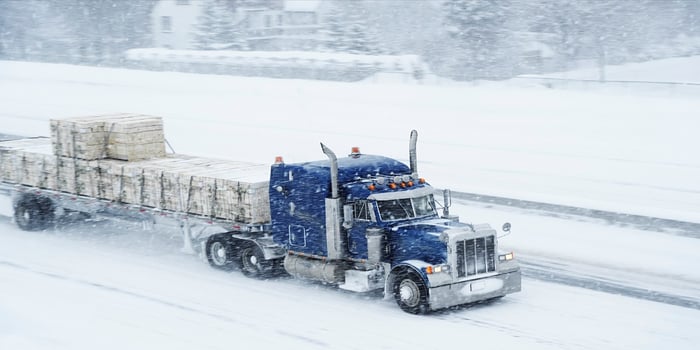5 Winter Fleet Operations Mistakes That Hurt Efficiency, Safety, and Budgets
Written by DiCAN | Read
Table of Contents
Another snowy Canadian winter is on the way! With that picturesque season comes, of course, adverse road conditions, and a reliable winter fleet is instrumental in keeping roads and the people who drive on them safe.
Failing to prepare your winter fleet operations for the coming season can set you and the communities you serve up for a rough winter. But understanding the following common mistakes fleet operators make regarding winter preparation, and how to avoid them, will help you manage the snow safely and effectively, no matter how bad the weather gets.
Mistake #1: Skipping Preventive Maintenance
When the weather is warmer, fleet owners tend to forget about their winter-specific assets. But leaving winter vehicles, or even attachments for multi-purpose vehicles, ignored in storage is a recipe for problems when they’re put into use.
Impact
If you skip preventative maintenance, you might find your fleet in dubious shape when you’re ready to deploy it. Belts, hoses, and pneumatics can degrade or be damaged in storage, leading to malfunctions or breakdowns when the vehicles hit the road. This can lead to more expensive repairs, the need to replace vehicles, and if a vehicle needs emergency maintenance in the middle of a snowstorm, you’ll be paying a premium for it.
Solution
Having your winter fleet inspected at regular times throughout the year and servicing vehicles accordingly will keep your winter season from being one of expensive surprises.
Mistake #2: Neglecting Route Optimization
Having drivers out on the road plowing and deicing with no clear, comprehensive, dynamic route, wastes time and money. If you’re not using route optimization, you’re not doing the job as well as it could be done.
Impact
With no optimized route, plows hit the same places while consistently neglecting others, spending time on relatively clean roads while snowy ones stay covered. It frustrates the communities you serve, wastes fuel, and keep your drivers on the road longer without getting work done.
Solution
GPS-based telematics solutions can determine your plows’ and spreaders’ most efficient, effective route, every day, in real-time, to maximize your use of resources and people, and give those you serve the service they deserve.
Mistake #3: Failing to Monitor Salt/Brine Usage
While you sometimes have to spread salt or brine plentifully to keep roads safe in the winter, doing so irresponsibly ends up being a big waste.
Impact
If you salt or brine excessively, you’re paying for deicer that could be better used elsewhere (and possibly damaging the roadside ecosystem in the process).
Solution
In the past, salting/brining relied on gut feel and general calculations, leading to unavoidable material waste. But implementing today’s smart spreading and resource monitoring technology, you can be certain you’re putting out just enough salt or brine for the job, right where it is needed.
Mistake #4: Overlooking Operator Training And Safety Tools
Winter driving refresher trainings may seem excessive and safety tools expensive, but when companies fail to implement them, they put everyone at risk.
Impact
Drivers that aren’t up-to-date on the best ways to handle their vehicles on icy roads, or equipped with helpful safety technology, create potentially hazardous conditions for themselves and others.
Solution
New heavy vehicle safety technology like dashcams and in-cab alert hardware are intuitive, easy-to-use necessities for vehicle operators. Implementing them, along with training on safe winter driving, can prevent costly accidents and even tragedies.
Mistake #5: Not Leveraging Technology Like Plow Pilot
Fleet owners that avoid the latest technologies for improving winter fleet operations unnecessarily reduce safety and productivity.
Impact
Winter fleet operators not using Plow Pilot miss getting an unprecedentedly clear picture of how their plows operate in real-time.
Solution
Implement DiCAN’s Plow Pilot! It’s the centralized snow plow technology you need to do the job better than ever before this winter.
High Costs And Serious Repercussions For Poor Winter Preparation
Insufficient winter fleet management can damage your machinery, your profits, and your reputation, and even put your drivers and the communities you support at risk for injury or worse.
Cleaning winter roads is a responsibility. Proper preparation lets you manage it reliably, economically, and safely. Today, a large part of that consists of implementing tech solutions that improve fleet vehicle operations in ways never before possible. One of them you simply can’t do without this winter is Plow Pilot.
Plow Pilot: Know What Your Plow Blades Are Doing
Plow Pilot monitors the positioning and activity of the plow blades on all the vehicles in your winter fleet. Situated in-cab and easy to install, the tamper-proof technology reads the plow’s pneumatics, integrates with GPS, and gives you precise, real-time updates on how your plows are being used, where.
If you want to get your winter fleet operations ready, and explore how Plow Pilot and other fleet technologies can help you get the job done better, contact DiCAN today!





.jpg?length=700&name=snow-plough-clearing-road-in-winter-storm-blizzard-2025-01-09-05-34-18-utc%20(1).jpg)